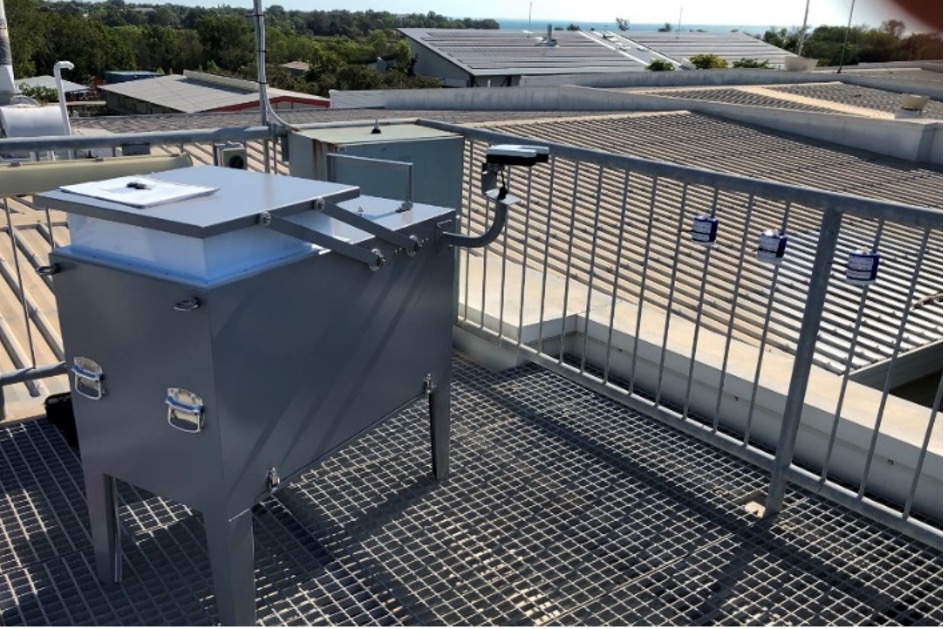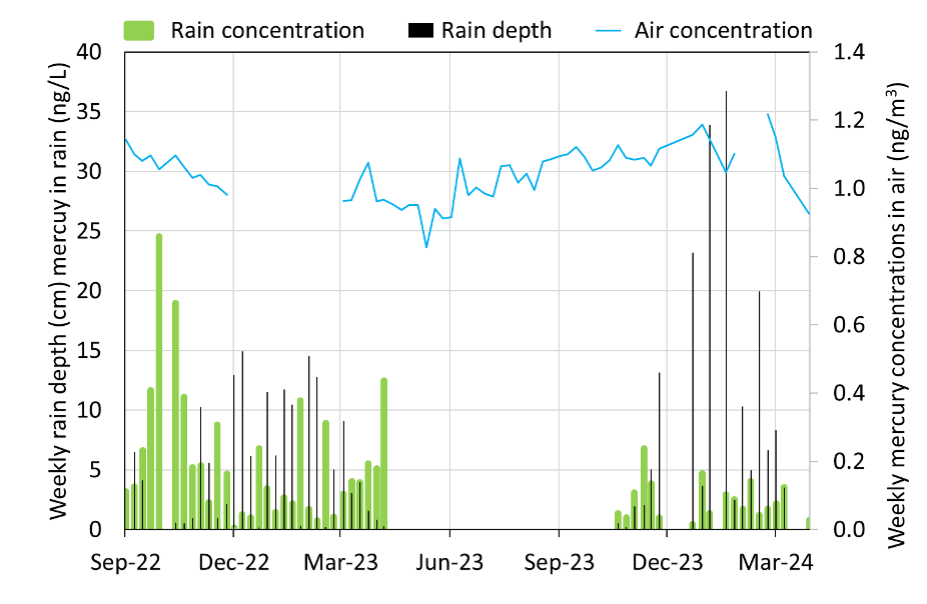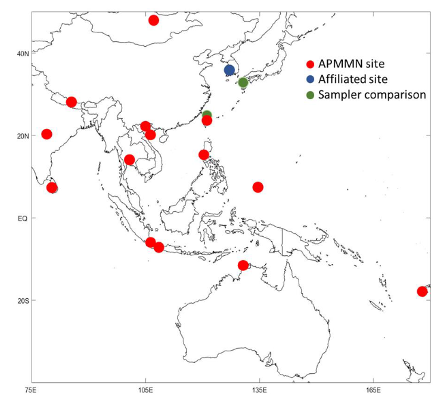Figure 1: APMMN site map showing the 15 countries where wet deposition of mercury has been monitored.
The Asia Pacific Mercury Monitoring Network (APMMN) cooperates with government agencies, academic institutions, and scientific research organisations. The aim of the APMMN is to monitor mercury in the atmosphere and rainfall to establish a baseline of levels throughout the Asia-Pacific region. Since 2012, the APMMN has supported wet deposition sampling of mercury in 15 countries, with over 1,700 samples analysed.
In 2022, Australia joined the APMMN network. A site was established at Charles Darwin University (CDU) in Darwin in a collaboration between CDU and the Commonwealth Scientific and Industrial Research Organisation (CSIRO). Here, we monitor the mercury concentration in the atmosphere and rainfall to understand mercury deposition through dry and wet processes.
Darwin in northern Australia is a strategic location because there are limited measurements from southern hemisphere sites in the Asian region, especially in a monsoonal area where the dominant removal process is during the wet season. Weekly measurements at this site complement the real-time atmospheric mercury measurements made at the Northern Territory Baseline Air Pollution station, located 30 km away at Gunn Point, where we study mercury emissions and deposition from biomass burning. For more about these measurements, refer to our previous blog here.
In 2022, CDU received a rainwater sampler from the APMMN for wet deposition, automatically collecting water in every precipitation event. Field procedures are conducted weekly, and samples are sent to Taiwan for mercury analysis.

The average mercury concentration in the rain was 5.4 (± 4.1) ng/L−1 for 28 1-week samples from the 22/23 and 23/24 wet seasons. These concentrations are on the lower end of reported averages for other sites in the network of 6-35 ng/L (Sheu et al., 2019). As shown in the figure below, mercury concentrations tend to be higher in samples with less rain however when factoring in yearly rainfall volumes, the total wet deposition per year is similar and ranges from 3.5 to 4.1 µg/m-2/yr.

Future goals are to continue to collect regularly, provide quality assurance, and share results with the APMMN to establish a baseline of concentrations and deposition in the Asian region
References
Sheu, Guey-Rong, David A. Gay, David Schmeltz, Mark Olson, Shuenn-Chin Chang, Da-Wei Lin, and Ly Sy Phu Nguyen. 2019. “A New Monitoring Effort for Asia: The Asia Pacific Mercury Monitoring Network (APMMN)” Atmosphere 10, no. 9: 481. https://doi.org/10.3390/atmos10090481
Content by Isabel Ely (CDU) and Jennifer Powell (CSRIO), published on 08 Nov 2024


Twitter